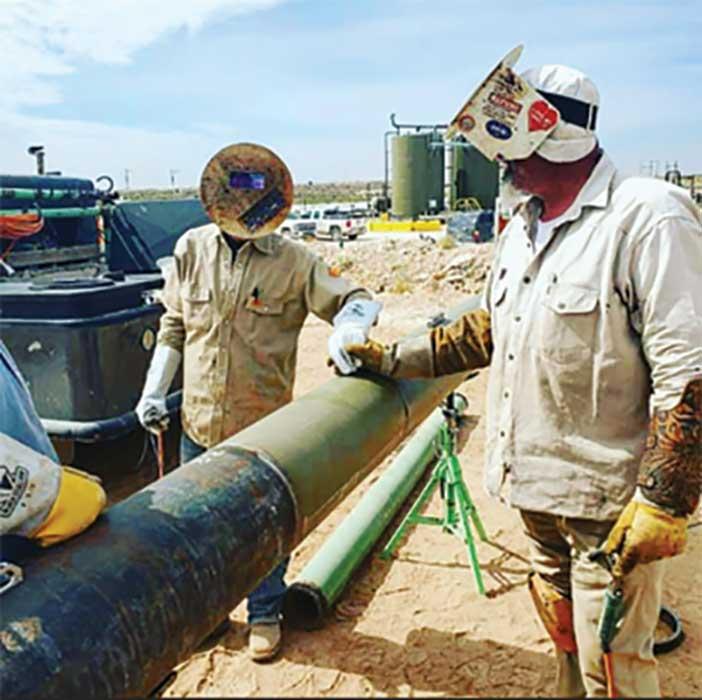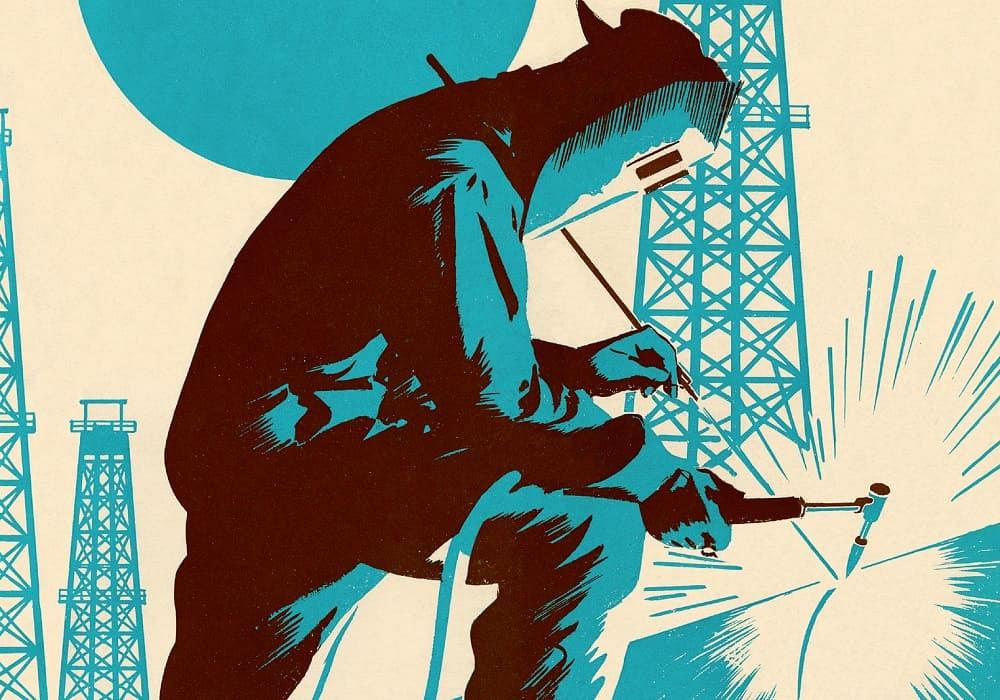Advanced Methods in Pipeline Welding Assessment: Innovations and Technologies for Improved Accuracy and Integrity in Weld Evaluation
The landscape of pipeline welding inspection is going through a considerable makeover, driven by innovative strategies that promise to improve both precision and integrity in weld analyses. Technologies such as automatic examination systems and progressed imaging modern technologies are redefining standard techniques, while non-destructive screening techniques guarantee material honesty is preserved.

Significance of Weld Inspection
Making certain the integrity of pipeline welds is crucial to the general security and integrity of commercial systems. Strenuous inspection of welds is essential to the lifecycle of pipeline facilities.
The value of weld inspection extends beyond mere conformity with regulative criteria. It acts as an aggressive procedure to recognize and fix flaws, such as insufficient fusion, porosity, or fractures, before they rise right into significant concerns. Effective inspection methods also add to the longevity of pipelines, minimizing upkeep expenses and improving functional effectiveness.
Additionally, detailed weld examinations foster trust amongst stakeholders, consisting of governing bodies, investors, and the areas offered by these pipes. By ensuring that all welds satisfy the required standards, companies can minimize threats and maintain their track records. In recap, weld assessment is important not just for operational stability yet also for the broader ramifications it holds for safety and environmental stewardship.
Automated Evaluation Equipments
The assimilation of computerized evaluation systems in pipe welding has changed the strategy to guaranteeing weld quality and honesty. These systems utilize sophisticated robotics and expert system to conduct evaluations that are not just much faster yet additionally much more consistent than typical techniques. Automated systems can cover extensive sizes of pipes effectively, recording information that human assessors may ignore due to fatigue or ecological conditions.
Among the essential benefits of automatic evaluation systems is their ability to operate in unsafe atmospheres, lowering the threat to human examiners. They utilize numerous non-destructive testing (NDT) techniques, such as ultrasonic testing and magnetic particle examination, to evaluate weld honesty without jeopardizing the framework. The information gathered is processed in real-time, permitting immediate feedback and timely rehabilitative actions when flaws are determined.
Furthermore, automated systems promote the standardization of inspection processes, making certain that each weld is evaluated against consistent requirements. This not just improves the dependability of results however likewise improves compliance with governing standards. As industries continue to focus on safety and security and functional performance, the function of automatic inspection systems in pipeline welding will certainly broaden, leading the method for more innovative quality control methods.
Advanced Imaging Technologies
Regularly employed in contemporary pipe welding examinations, progressed imaging innovations have considerably boosted the ability to find and assess weld issues. Methods such as electronic radiography, calculated tomography, and thermographic imaging give assessors with high-resolution images that expose sub-surface flaws and architectural disparities that may be undetectable to the naked eye.
Digital radiography utilizes digital sensing units to catch photos, enabling for immediate review and boosted photo contrast. This results in much faster evaluations and boosted precision in identifying essential defects. Computed tomography, on the various other hand, uses three-dimensional imaging, enabling inspectors to imagine complex geometries and examine the stability of welds from several angles - Pipeline Welding Inspection. This depth of analysis is important for discovering issues that traditional methods might overlook.
Thermographic imaging utilizes infrared technology to detect variations in temperature level, determining locations of potential weak point or tension within the weld. These innovative imaging modern technologies not only improve issue discovery prices however likewise decrease the time and sources needed for pipe inspections. Because of this, they play a vital role in keeping pipeline safety and security and reliability, making sure conformity with market standards while decreasing operational risks.
Non-Destructive Testing Methods
Using various techniques, non-destructive screening (NDT) techniques are important in pipe welding assessments, permitting the examination of weld stability without compromising the material's structural honesty. NDT includes a series of approaches, including ultrasonic testing (UT), radiographic testing (RT), magnetic bit testing (MT), and dye penetrant screening (PT) Each method has distinctive advantages and applications relying on the particular requirements of the evaluation.
Ultrasonic testing utilizes high-frequency sound waves to identify internal imperfections, providing precise dimensions of weld density and honesty. Pipeline Welding Inspection. Radiographic testing utilizes X-rays or gamma rays to produce photos of the weld, exposing internal issues that might not show up externally. Magnetic fragment screening is reliable for finding surface area and near-surface suspensions in ferromagnetic products, while dye penetrant screening highlights surface cracks by utilizing a tinted color
Incorporating these NDT techniques right into pipe welding examinations enhances the precision and reliability of weld analyses, making sure that possible failings are identified early. As industries demand greater criteria for safety and performance, the function of NDT in maintaining the stability try this of bonded structures continues to be pivotal in pipeline construction and maintenance.

Future Trends in Weld Assessment
As we want to the future of weld evaluation, innovations in innovation are positioned to change the techniques employed for evaluating pipe honesty. The combination of synthetic intelligence (AI) and maker understanding in assessment processes is anticipated to improve the accuracy of flaw discovery and anticipating maintenance. These innovations permit real-time information analysis, allowing examiners to recognize prospective concerns before they escalate into significant issues.
In addition, making use of drones equipped with innovative imaging systems is gaining grip. These airborne evaluations can cover vast areas quickly, recording high-resolution photos and information that can be assessed for problems in hard-to-reach locations. This not only boosts security yet also raises performance in the examination process.
Furthermore, the growth of smart sensors embedded in pipeline systems provides the possibility for continual monitoring. These sensors can find changes in pressure, temperature, and vibrations, offering useful understandings right into the wellness of the welds with time.

Verdict
In verdict, the assimilation of innovative techniques in pipeline welding evaluation substantially improves the accuracy and integrity of weld assessments. Advancements such as computerized assessment systems, progressed imaging innovations, and non-destructive testing methods play an essential function in enhancing problem discovery prices and promoting positive maintenance strategies. As these modern technologies remain to evolve, they will certainly additionally guarantee the safety and performance of pipe systems, eventually adding to the honesty of essential framework.
